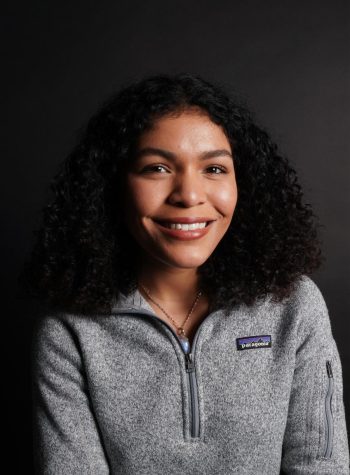



For those suffering a housing crisis, there are some resources not known to all.
February 25, 2023
Finding housing is often a part of the college experience. But while some students find housing easily, others struggle.
10% of students have experienced homelessness and 35% reported experiencing housing insecurity, according to a study conducted in 2019 by SF State Associate Professor Kevin Eschleman and graduate students in Organizational Psychology.
Student homelessness is not a new issue. In recent years the problem has become more prevalent because of the increasing prices of rent and the lack of dorms, especially in the Bay Area.
Student housing stability coordinator at Providing Assistance to Housing Solutions (PATHS) program, Stephanie Porcell sees lack of housing as an issue at all universities nationwide.
“It’s not just happening on our campus, it’s a systemic-wide issue,” Porcell said.
Christopher Lujan, director of Food+Shelter+Success says the impact the pandemic has had on student housing insecurity brought the issue more into the public eye.
“I think COVID might have brought a lot more visibility to the issue,” Lujan said. “Obviously COVID was horrible, but I think it’s brought this conversation a little bit more to the forefront.”
This is the first year since the pandemic that students of all grade levels have been allowed to return to in-person classes.
SF State has some resources on campus that may be unknown to students in these situations.
In the Food+Shelter+Success Offices, located at the Village at Centennial Square, staffers work to provide basic needs to students in need.
The PATHS program started in November 2020 and is designed to help students facing housing insecurity or are at an imminent risk of being unhoused.
The Gator Crisis Housing is a part of PATHS and can be used by students who need a place to stay. This program provides temporary solutions for unhoused students while they try to stabilize their situation.
Students can apply to see if they are eligible to use the service. If their application is approved they will be contacted by a staffer.
Housing is provided for 21 days, if students need an extension, they can work with the Basic Needs program to determine the best plan.
Gator Crisis Housing acts as “bridge support.” The team puts the students in contact with the resources they offer so their basic needs are covered.
There are currently two apartments at the Village of Centennial Square specifically serving students in this program.
“We want to offer a safe space,” Porcell said. “We can place students temporarily in a safe location where their basic needs are met, we also offer food support.”
PATHS resources also include food support. Students in the program are entitled to receive a City Eats meal card with 60 swipes.
The program says it is reserved for “students experiencing homelessness, or who are at imminent risk for homelessness.” However, anyone can apply to access these resources.
Every plan of action is different. The program accesses solutions on a case-by-case basis.
The team also works closely with the Counseling and Psychological Services office, community partners and providers like LYRIC, an LGBTQ youth organization.
Students apply to this program for a number of reasons, including family violence, financial instability or being in between housing situations.
So far, PATHS has been able to help over 30 students since its inception and the team aims to help more.
Their visions for the future are to grow the team and offer more resources to aid in the housing search as well as the prevention of housing insecurity.
Students also have access to Residential Life, a unit within the Division of Student Life and Student Affairs that works with students living in on-campus housing.
The program provides students living on campus with financial aid for students in need. The HOPE Crisis Fund provides students with one-time emergency funding.
Although Residential Life and the Gator Housing Crisis are two separate entities, collaboration is key.
David Rourke, director of Residential Life spoke about how this collaboration works.
“Our relationship is as a supporter and strategic partner,” Rourke said. “We are two programs that work alongside each other.”
This way, they can support each other in different ways.
“So if a student may not be able to stay in Gator Crisis Housing, or that’s not a good fit, we can then lean on our ResLife partners to say, is there a vacant room, and they often support a lot of students with like roommate conflicts and safety issues,” Porcell said.
However, there are differences between the two programs.
“We’re acting in the capacity of the students’ landlord, so in that capacity that is given to us by the State of California we must collect rental fees for access to those spaces,” Rourke said. “They’re [Gator Housing Crisis] acting in the capacity of a support center because the students in that program do not have resident rights, they are acting in the capacity of more like a shelter.”
Some on-campus buildings are host to numbers of empty spaces.
According to the director of Residential Life, the vacant units can be attributed to three reasons. Two of them are COVID-19 and students learning remotely.
“Continuing and returning students once they left us are a little bit more timid in terms of returning, that tends to be a norm anyway,” Rourke said. “The second reason is because we still have online classes and hybrid classes and then, in person classes, students were really hedging their bets, or trying to wait and see what kind of schedule they were going to have, and if they could take classes and move forward with their degrees online versus in person, that was their preference.”
The waitlist is the third reason why students may not fully commit to the housing spaces on campus.
“If we’re not able to confirm people with a space right away, then that waitlist starts to diminish, and we are starting to see about 10% of our students, which is about 300 beds, or 300 students,” Rourke said. “So when that happens and we see 300 Students leave, and we no longer have a waitlist, then those beds stay empty.”
Rourke mentions students may leave for financial hardship, mental health and wellbeing concerns, or, in some cases, because of opportunities to be at another school.
The construction of the West Campus Green building aims to offer more affordable housing in comparison to the current options of on-campus housing.
This building will support 750 incoming freshmen and hold a dining facility, a health center and a pharmacy.
Stefano Silvia, RA at the Village of Centennial Square and former president of the Residence Hall Association, is very active in advocating for the resources offered on campus. He is also involved in the West Campus Green development.
“The plan is to make it like $700 a month, or $650 a month, instead of currently, the way it’s situated right now is, on average, for a room that you share is like around $1400, plus, depending on the meal plan, another additional four to $500,” Silvia said. “Maybe they don’t fully understand this when they’re applying for housing.”
To receive housing insecurity help, fill out this form to access the Gator Crisis Housing program, or apply to the HOPE Crisis Fund program for financial aid.

